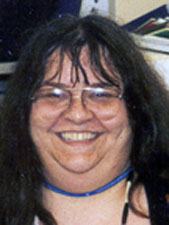Curator's Pick -- Dick Tracy and Mr. ZIP
By Nancy Pope, Historian

In the summer of 1963 the Post Office Department introduced its new ZIP Code plan to the American public. Every address would be assigned a five-digit number that was to be added to the traditional city and state combination. Postal officials anticipated some resistance by the public to using ZIP codes. Not only did people have to remember a series of numbers assigned to their address, but also learn the numbers assigned to each of their correspondents. The Department began a nation-wide publicity campaign for the service, using posters, radio, and television advertisements, to enticing noted singer Ethel Merman to record a ZIP code song (sung to the tune of "Zip-a-dee-doo-dah").
In addition to Ethel Merman, the Post Office partnered with other popular culture icons of the time to promote the service. Among those was Chester Gould’s iconic detective, Dick Tracy. Tracy is pictured in this poster with his omnipresent two-way Wrist TV, speaking to none other than service’s latest icon, Mr. ZIPhimself.
Unfortunately for the Post Office Department, the 1960s were a turbulent time for Americans and numbers. It was in this decade that the full switch from alpha-numeric telephone numbers (Glenn Miller’s “PEnnsylvania 6-5000” was a shout out to the phone number for The Hotel Pennsylvania in New York City), to numbers only, with area codes added in to boot! As a result, there was more public resistance to using ZIP codes than might have been anticipated. As the editor of the Decator Herald put it, “The US postoffice department comes up with a new ZIP code before most of us know our telephone area code number.” An editor from the Los Angeles Times grumbled that the new ZIP code number was one more step towards turning people into numbers. “What with wage earners already neatly tagged with social security numbers and all-digit phones multiplying, the numbers wizards should have us pigeon-holed and responding to subliminal remote control in plenty of time to beat Orwell’s 1984 deadline.”
Although not widely accepted by the American public, the introduction of ZIP+4 (for a total of nine ZIP code numbers to memorize) has been a success for bulk mailings, allowing mail pieces to be sorted more swiftly and correctly through the US Postal Service’s massive mazes of automated equipment. Still most Americans can recite their ZIP code (as well as those of close friends and family). And, unlike telephone area codes that stay with our cell phones as we move from city to city, ZIP codes mark permanent locations. For that reason, they have come a long way from helping to move mail a little faster in the mid 1960s – and have become the crux of numerous statistical, geographical, and socio-political analyses.

About the Author
The late Nancy A. Pope, a Smithsonian Institution curator and founding historian of the National Postal Museum, worked with the items in this collection since joining the Smithsonian Institution in 1984. In 1993 she curated the opening exhibitions for the National Postal Museum. Since then, she curated several additional exhibitions. Nancy led the project team that built the National Postal Museum's first website in 2002. She also created the museum's earliest social media presence in 2007.
